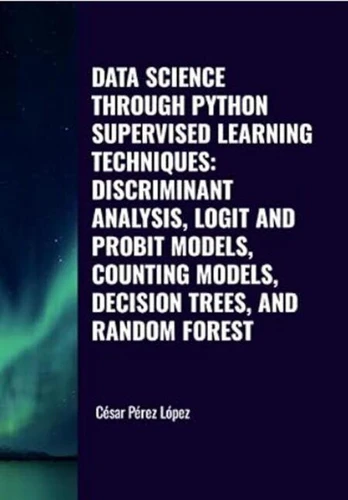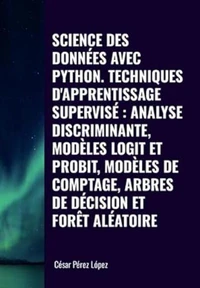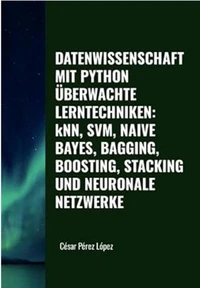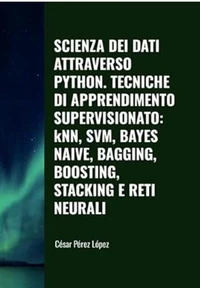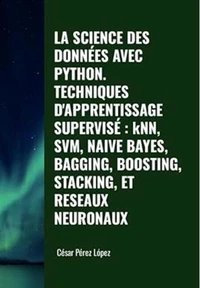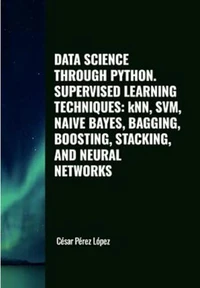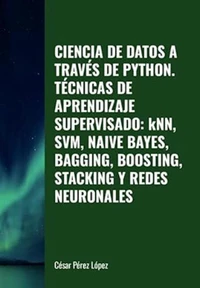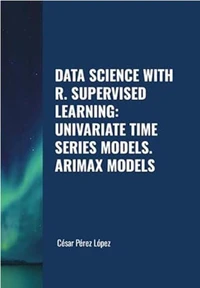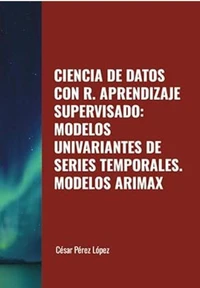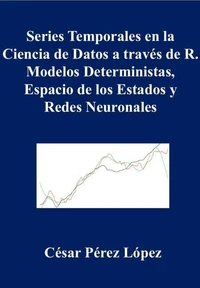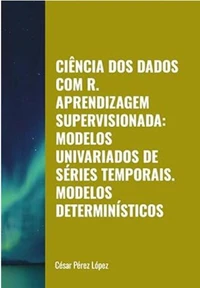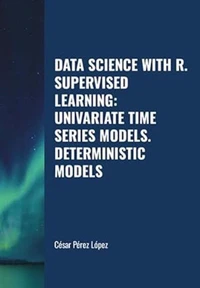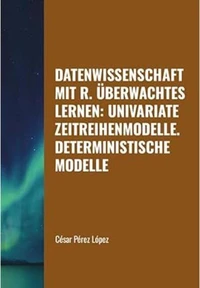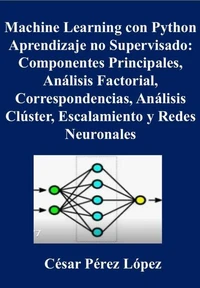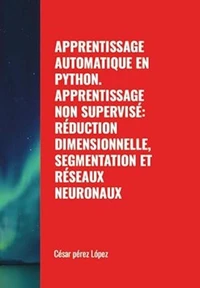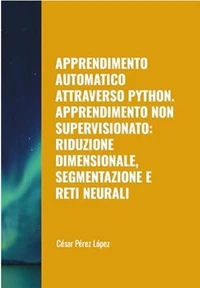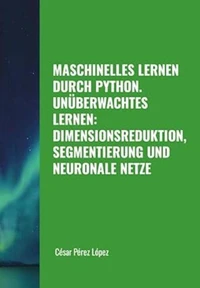Nouveauté
Data Science through Python. Supervised Learning Techniques: Discriminant Analysis, Logit And Probit Models, Counting Models, Decision Trees, and Random Forest. DATA SCIENCE
Par :Formats :
Disponible dans votre compte client Decitre ou Furet du Nord dès validation de votre commande. Le format ePub est :
- Compatible avec une lecture sur My Vivlio (smartphone, tablette, ordinateur)
- Compatible avec une lecture sur liseuses Vivlio
- Pour les liseuses autres que Vivlio, vous devez utiliser le logiciel Adobe Digital Edition. Non compatible avec la lecture sur les liseuses Kindle, Remarkable et Sony
 , qui est-ce ?
, qui est-ce ?Notre partenaire de plateforme de lecture numérique où vous retrouverez l'ensemble de vos ebooks gratuitement
Pour en savoir plus sur nos ebooks, consultez notre aide en ligne ici
- FormatePub
- ISBN8231822324
- EAN9798231822324
- Date de parution18/11/2025
- Protection num.pas de protection
- Infos supplémentairesepub
- ÉditeurWalzone Press
Résumé
Data science is an interdisciplinary field that uses methods, algorithms, processes, and systems to extract knowledge and conclusions from structured and unstructured data. It combines elements of statistics, computer science, mathematics, and analytical techniques to solve problems, make predictions, and generate value from data. It relies on big data to discover patterns, trends, and relationships that can be used for decision-making in various industries.
It is an important support for Artificial Intelligence. Data science uses two types of techniques: supervised learning, which trains a model with known input and output data to predict future outcomes, and unsupervised learning, which finds hidden patterns or intrinsic structures in the input data. Most of the supervised learning techniques are developed throughout this book from a methodological point of view and from a practical point of view with applications through Python software.
The following techniques are explored in depth: Discriminant Analysis, Logit Models, Probit Models, Count Models, Generalized Linear Models, Discrete Choice Models, Decision Trees and Random Forests.
It is an important support for Artificial Intelligence. Data science uses two types of techniques: supervised learning, which trains a model with known input and output data to predict future outcomes, and unsupervised learning, which finds hidden patterns or intrinsic structures in the input data. Most of the supervised learning techniques are developed throughout this book from a methodological point of view and from a practical point of view with applications through Python software.
The following techniques are explored in depth: Discriminant Analysis, Logit Models, Probit Models, Count Models, Generalized Linear Models, Discrete Choice Models, Decision Trees and Random Forests.
Data science is an interdisciplinary field that uses methods, algorithms, processes, and systems to extract knowledge and conclusions from structured and unstructured data. It combines elements of statistics, computer science, mathematics, and analytical techniques to solve problems, make predictions, and generate value from data. It relies on big data to discover patterns, trends, and relationships that can be used for decision-making in various industries.
It is an important support for Artificial Intelligence. Data science uses two types of techniques: supervised learning, which trains a model with known input and output data to predict future outcomes, and unsupervised learning, which finds hidden patterns or intrinsic structures in the input data. Most of the supervised learning techniques are developed throughout this book from a methodological point of view and from a practical point of view with applications through Python software.
The following techniques are explored in depth: Discriminant Analysis, Logit Models, Probit Models, Count Models, Generalized Linear Models, Discrete Choice Models, Decision Trees and Random Forests.
It is an important support for Artificial Intelligence. Data science uses two types of techniques: supervised learning, which trains a model with known input and output data to predict future outcomes, and unsupervised learning, which finds hidden patterns or intrinsic structures in the input data. Most of the supervised learning techniques are developed throughout this book from a methodological point of view and from a practical point of view with applications through Python software.
The following techniques are explored in depth: Discriminant Analysis, Logit Models, Probit Models, Count Models, Generalized Linear Models, Discrete Choice Models, Decision Trees and Random Forests.

